Michael Alexander speaks to two Dundee ship enthusiasts who believe the time is right for a magnificent model to return to the city of its birth, which, in turn, would celebrate the work of the former Caledon shipyard.
Hidden from public view in the Smithery Store at the Historic Dockyard Chatham in Kent is a spectacular shipyard model of Alfred Holt’s Caledon-built cargo and passenger liner TSMV Glenearn.
Measuring over 12 feet long and built in Dundee by Caledon model maker William Gateshill, the model represents two Dundee-built ships regarded by many as the most significant vessels ever constructed on the shores of the Tay.
Wartime role
Both the Glenearn (built 1938) and her sister Glengyle (1939) were requisitioned by the Admiralty on the outbreak of war in 1939.
Both ships were converted into Landing Ships Infantry (Large) and at least one played a critical role in every major amphibious operation of the Second World War.
They rescued thousands of Allied servicemen from captivity or worse in Greece and Crete.
Glengyle ran the Luftwaffe and U-boat gauntlet to bring desperately needed supplies to the besieged island of Malta and Glenearn was at the forefront of the D-Day landings in 1944.
Post-war, they provided the template for much of Alfred Holt’s fast general cargo and passenger fleet prior to the containerisation revolution.
But is it time for this magnificent model, which was loaned to the National Maritime Museum in 1947 and which has been in storage there for decades, to make a long-overdue return to Dundee?
Campaigners
Dundee historian Dr Andrew Jeffrey and former Caledon manager John ‘Jack’ Reilly think so.
They have been campaigning for the model to be brought back to Dundee to help promote the history and heritage of Dundee’s Caledon yard, which closed in 1981, and to show case the remarkable history of these vessels.
Through their persistence, Chatham Historic Dockyard and the National Maritime Museum have made it clear to them the model could be made available to an “accredited institution” in Dundee on a free 30-year lease, Andrew says.
The only costs likely to be incurred would be transport from the south of England and a minor conservation issue.
However, in correspondence sent to Jack from Dundee City Council’s promotion and development team, the Dundee local authority has rejected the offer on the basis that they are currently unable to meet museum standards for storing the model anywhere in the city.
Andrew Jeffrey believes it will be a “crying shame” if the model does not return to Dundee, and both he and Jack believe now is the time to try and secure a “public head of steam” for their proposal.
“Is this Dundee’s Stone of Scone moment? It’s too good an opportunity to miss!” says Andrew. It’s just so much part of Dundee’s heritage!
“Any time I’ve done talks on this, people say ‘why is the model not here? Why is it in storage in Greenwich?’ And that’s lay people – not enthusiasts like us.
“The bottom line is it’s there and it’s available. It really should come home for its final voyage! So let’s start being serious about it.”
‘Jaw-dropping’ sight
Andrew had seen photos of the Glenearn model and an Evening Telegraph cutting from 1947 where Caledon model maker William Gateshill was repairing it.
It was while involved with a ship models project at the McManus a few years ago, however, that he went to see the model at Chatham for himself.
“When I walked into the room my jaw just dropped,” he recalls.
“Twelve feet six long, huge and immensely detailed.
“This model is of without question the most significant ship ever built on the shores of the Tay.
“The reason I think this is the most important ship and other people think as well is she was very advanced for her time – a very strong and fast ship, and she was earmarked by the Admiralty in 1939 when she was still on the stocks.
“She was taken up inevitably at the start of the war as a fast stores carrier.
“But very quickly they realised this ship had a lot more potential than that.”
Andrew explains that the model represents two ships – the Glenearn and the Glengyle.
But the Glenearn was the “granddaddy of them all”, he says, including the landing of the first wave on Sword Beach on D-Day.
Launch of the ships
The story begins in 1935 when Liverpool shipping line Alfred Holt took over the ailing Glen Line and immediately set about modernising the Glen fleet.
Alfred Holt also had a large shareholding in Dundee’s Caledon Shipbuilding and Engineering Co.
In March 1937, Holt ordered three large twin-screw motor vessels. It was the most valuable single contract ever awarded to the Dundee yard.
The three Dundee-built ‘Glens’ – namely Glenearn, Glengyle and Glenartney – were to join a fleet of eight sisters on Holt’s twice-monthly service to Singapore, Hong Kong, Japan and China.
Recognising their importance before the first had even been completed, the Caledon directors commissioned their model maker William Gateshill to make two large models of Glenearn in 1938. Each model cost £500 and took around eight months to build.
One model was to be retained by the shipyard and it was still there, outside the boardroom, when the yard closed in 1981.
Sold off by British Shipbuilders, it subsequently found its way to an American collection and was sold at Bonham’s in New York in 2010 for almost $100,000.
The other model, originally intended for Alfred Holt’s Liverpool HQ but never making it there due to war, was loaned to the National Maritime Museum where it’s been since.
However, it’s the story of the Glens themselves – described as “the finest ships ever built for the Far East service” – that makes the models so significant.
“Launched on June 29 1938, Glenearn had completed just two voyages when she was requisitioned by the Admiralty in October 1939, initially as a fast stores-carrier,” says Andrew.
“In 1940 she and her newly launched sister Glengyle were converted into Infantry Assault Ships and fitted with 14 landing craft.
“On the night of April 19-20, 1941, Glenearn and Glengyle made the first ever Commando assault from specialised ships at Bardia, Cyrenaica.
Two days later, Glenearn and Glengyle joined Operation Demon, the evacuation of British and Imperial forces from Greece.”
Andrew explains that Glengyle evacuated 3000 troops to temporary sanctuary at Suda Bay in Crete.
Glenearn was subjected to repeated enemy air attacks, suffering two direct hits, one of which started a serious fire, but still managed to rescue no fewer than 5100 British and Imperial personnel.
Another air attack off Nauplion on April 26 unseated her machinery and she had to be towed 500 miles to Alexandria.
Glenearn was bombed again in Suez Bay while waiting to go to Colombo for repairs.
Glengyle, meanwhile, had assisted in the evacuation of 6000 Argyll and Sutherland Highlanders from Crete and on June 8, 1941, took part in the invasion of Syria at Litani River.
In January 1942, Glengyle and a strong naval escort made a daring high-speed dash from Alexandria with urgently needed supplies for the besieged island of Malta.
The island fortress was perilously close to starvation and the Spitfires defending its airspace were rapidly running out of both fuel and ammunition.
Glengyle was next involved in the ill-fated 1942 Dieppe landing, then the Operation Torch landings in Vichy, French North Africa. She went on to play a leading role in Operation Husky, the Allied landings in Sicily in July 1943 and at Salerno and Anzio in Italy.
Significantly, however, it was the repaired and refitted Glenearn that came into her own as the command landing ship for the D-Day landings in June 1944.
Normandy Beachhead role
Glenearn carried Royal Marines clearance divers and assault companies of the 1st South Lancs and 2nd East Yorks regiments, the first wave to land on the Queen White sector of Sword Beach at the eastern end of the Normandy Beachhead.
A and C companies of the 1st South Lancs from Glenearn were first to go ashore on Sword along with the amphibious Sherman tanks of the 13th/18th Hussars, taking heavy casualties from enemy machine guns and mortars.
Glenearn ran a ferry service for several weeks after D-Day, bringing in reinforcements and supplies and repatriating the wounded, before being transferred to join Glengyle, by then serving in the British Pacific Fleet.
As the two ships were returned to their owners in 1946, Field Marshal Montgomery wrote of the “superb gallantry and devotion to duty of those who served in ships like the Glengyle, whose ship’s company are a shining example of what can be done by human endeavour in time of war.”
Glengyle was scrapped in 1971 while Glenearn, having survived a bombing attack by communist Chinese aircraft off Formosa in 1950, met her date with the scrap man in 1970.
The surviving model, however, is the next best thing to the ships themselves.
“The bottom line is that these two ships had an extraordinary wartime record which was referred to by Montgomery,” says Andrew.
“Nothing else that was built in Dundee comes close and this model is, in a way, all we have left of the most significant ships ever built on the shores of the Tay.
“So it would be a crying shame if it is not brought home to represent both the work of the yard and the story of these ships – the story we could tell, the interpretation we could do on these two ships, is phenomenal.”
Model is a ‘work of art’
Jack Reilly, who brought out the first edition of his popular book The Caledon Shipyard in 2012, describes the model as “just a work of art”.
The Dundee-born great grandfather of three and grandfather of six, who grew up in the Hilltown, started as an apprentice at Caledon aged 15.
During his apprenticeship he got into the engineering drawing office and then later the design and estimating office.
After a spell at sea as an engineering officer with Royal Mail Lines, he returned to Caledon as assistant chief of the design and engineering department before being promoted to department chief by the age of 25.
In 1972, he was promoted to technical manager, remaining in position until Caledon closed in 1981.
“There are a few models in the McManus which I was involved in getting,” says the 81-year-old, who, in 1992, went on to become director of shipbuilding and head of security at Malaysia Shipbuilding & Engineering Company in the state of Johor, Malaysia, before returning to the UK in 2000.
“But of all the models I’ve seen around the world, this is the most impressive.”
Judging by the feedback to his book, which saw its expanded fifth edition come out last year, and which is for sale at the McManus, he knows there’s huge fascination about the legacy of Caledon and the human tales of those who worked there in the city and beyond.
If there’s to be a sixth edition of his book in future, however, he hopes it’ll include a section detailing how the magnificent model of the Glenearn has finally “come home”!
National Maritime Museum position
A spokesperson for The National Maritime Museum told The Courier they have not been officially approached regarding the loan of the shipyard model of the cargo and passenger liner TSMV Glenearn.
“Currently, the model can be viewed at No1 Smithery Store at The Historic Dockyard Chatham, via the glassed public corridor,” the spokesperson added.
“The model can also be viewed in detail by appointment”.
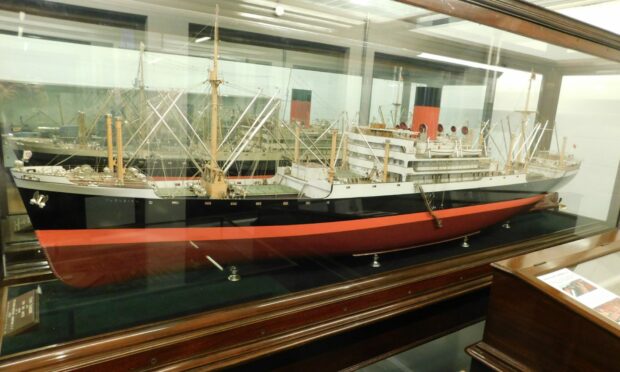
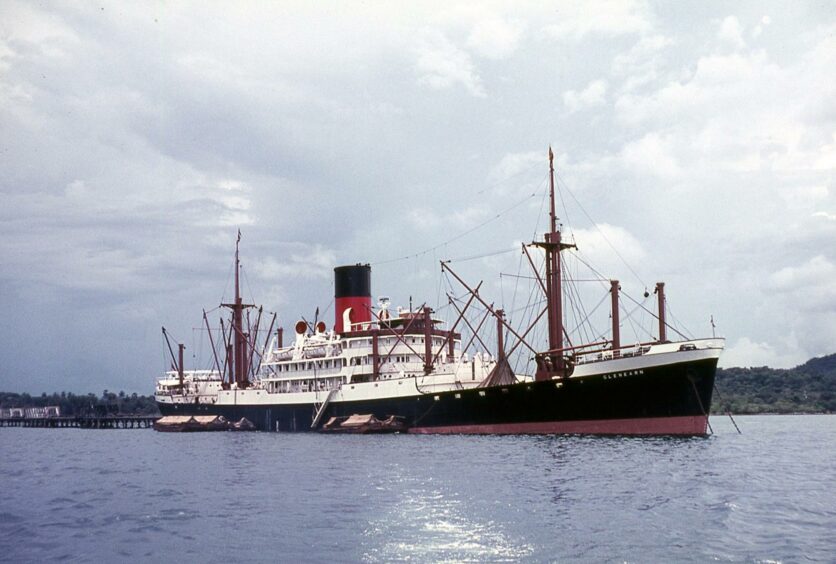
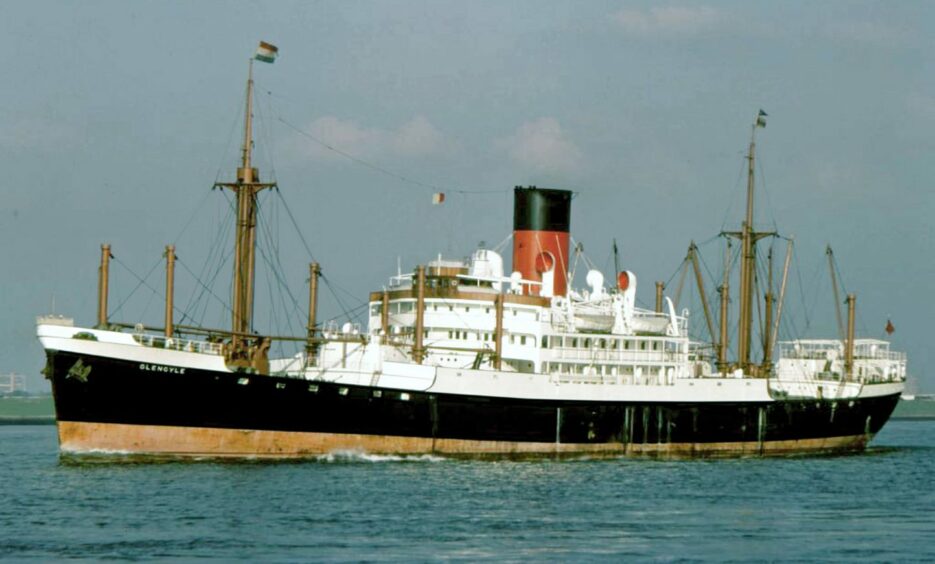
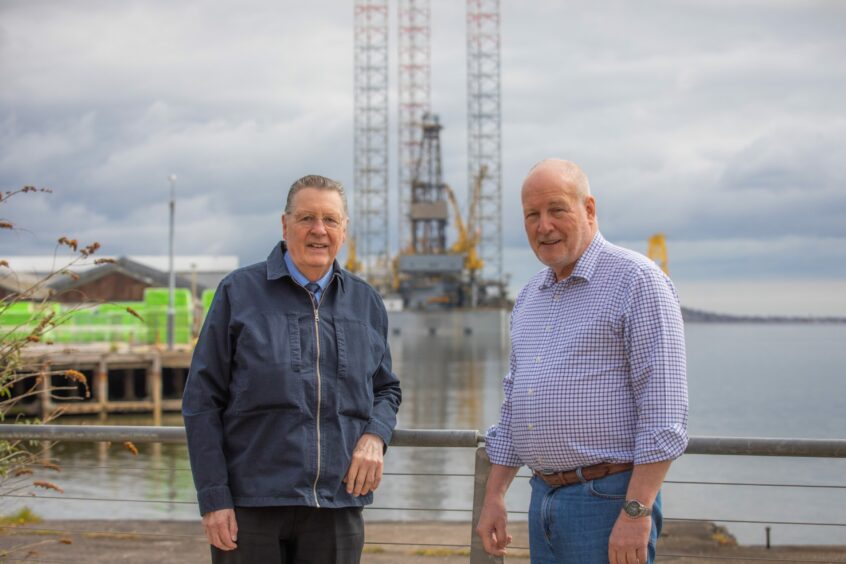
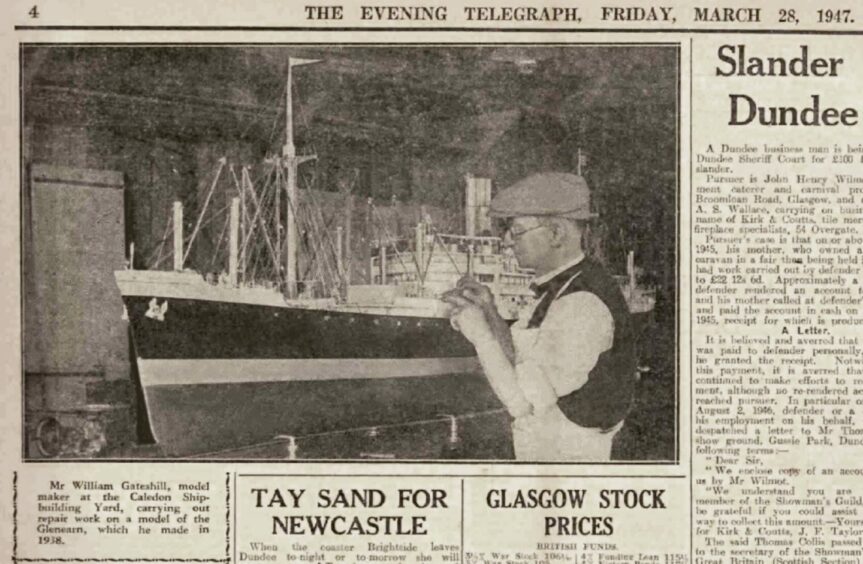
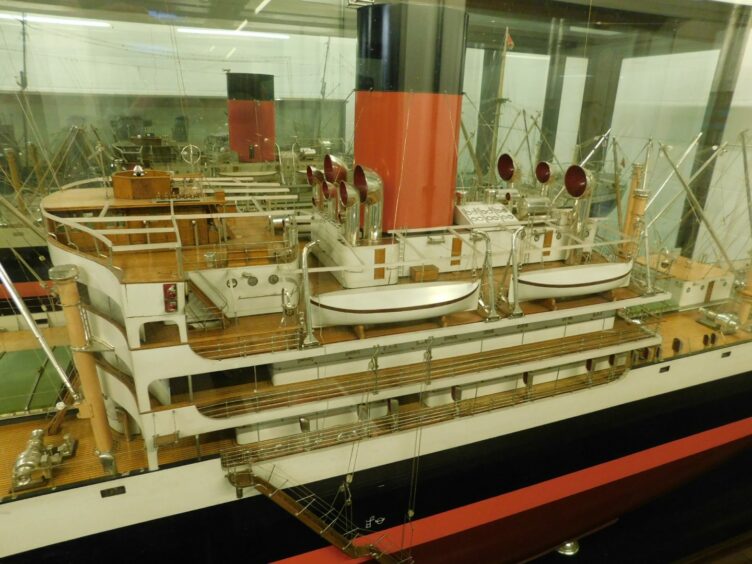
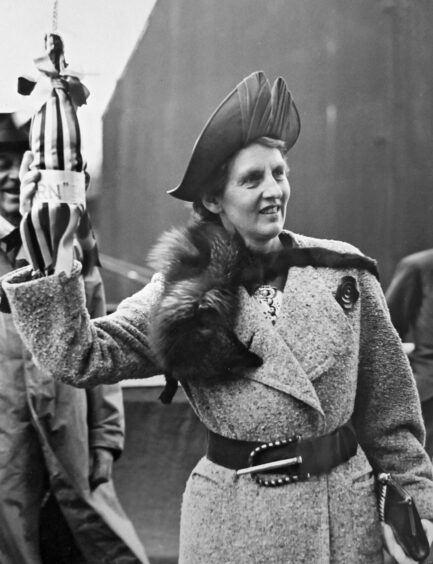
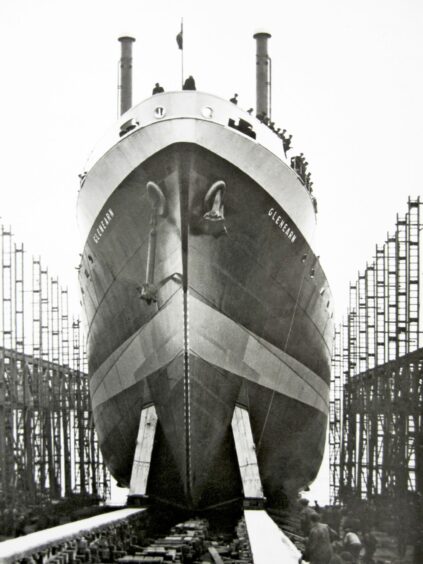
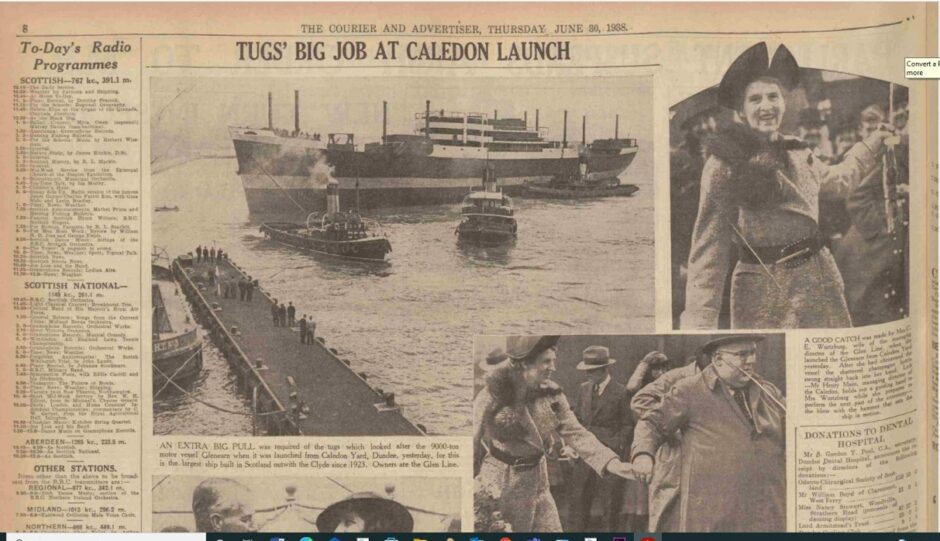
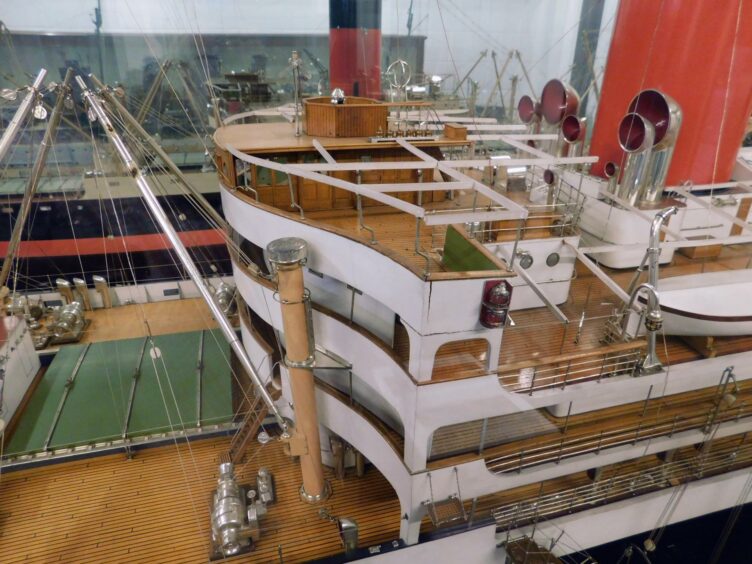

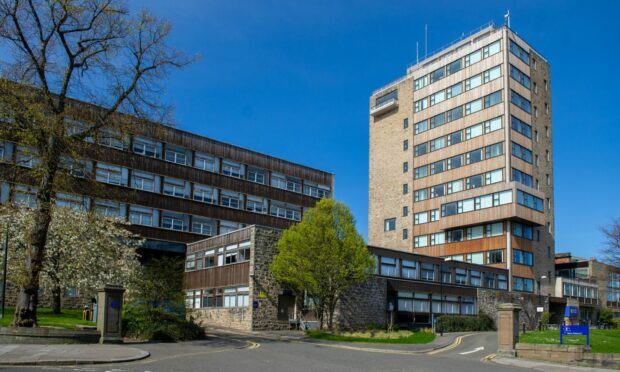





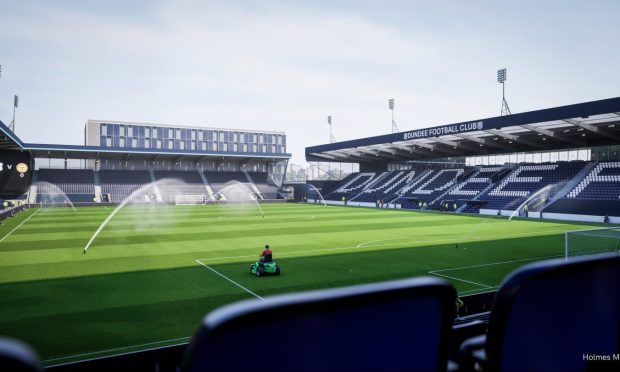

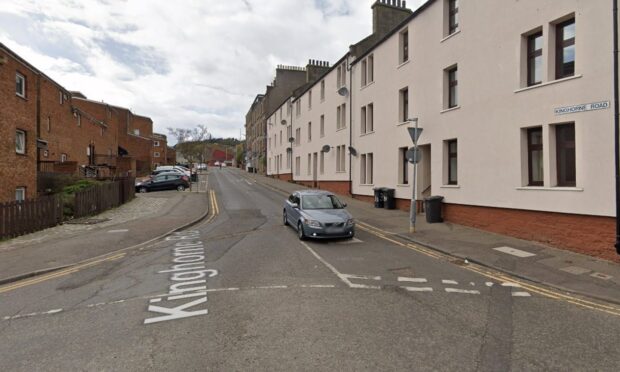

Conversation